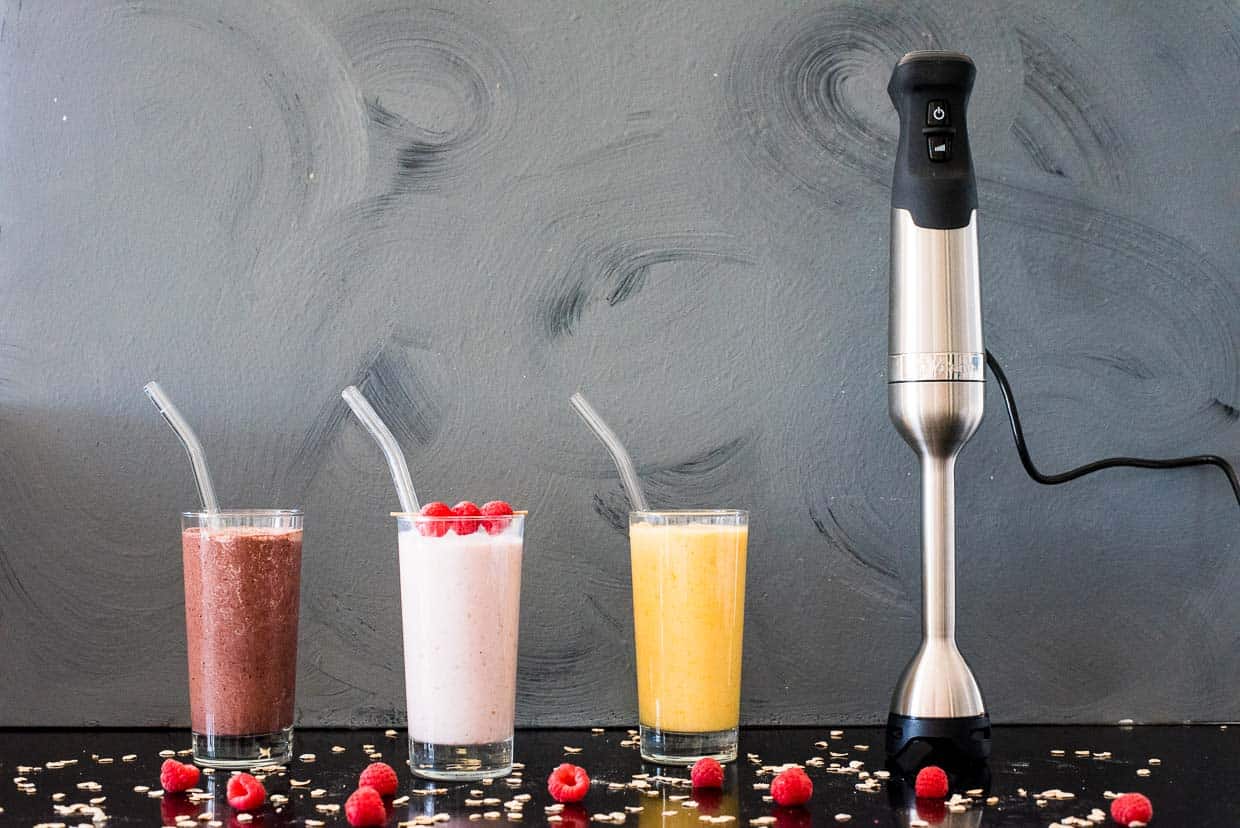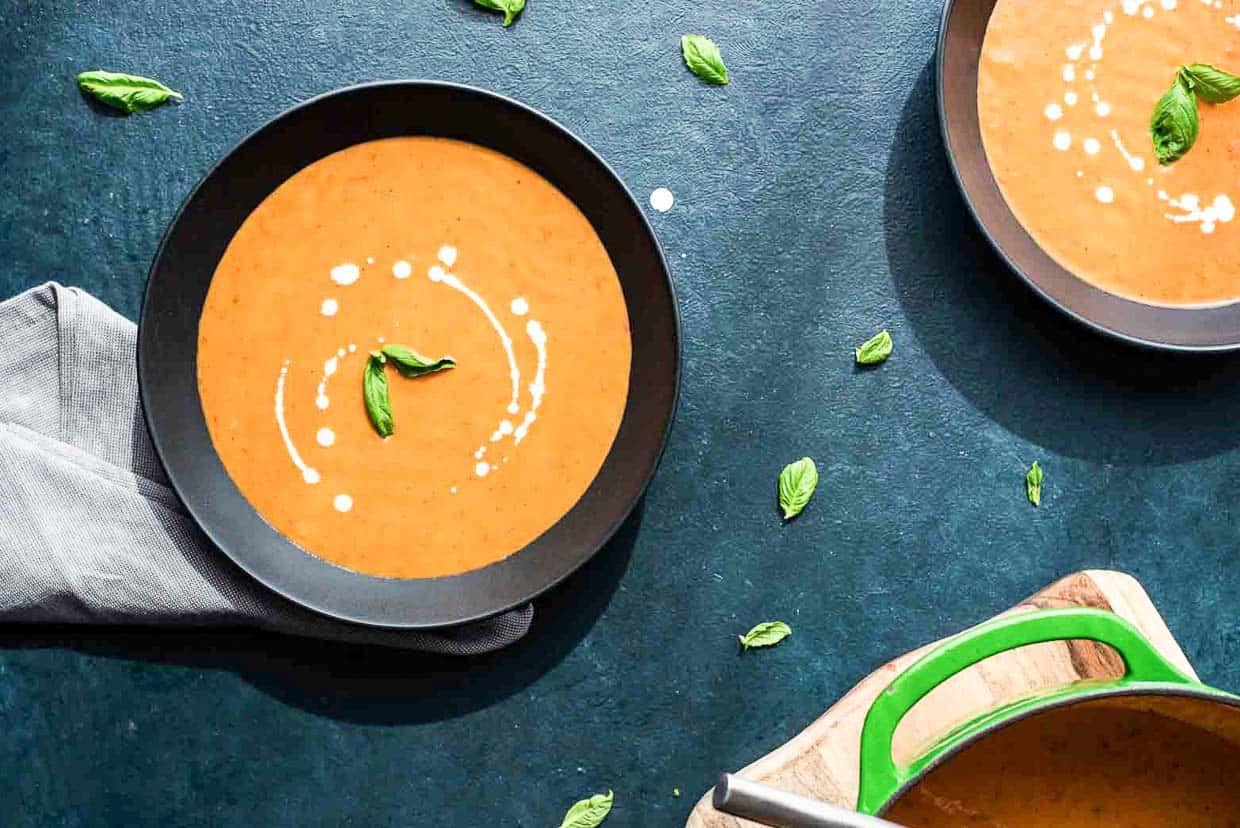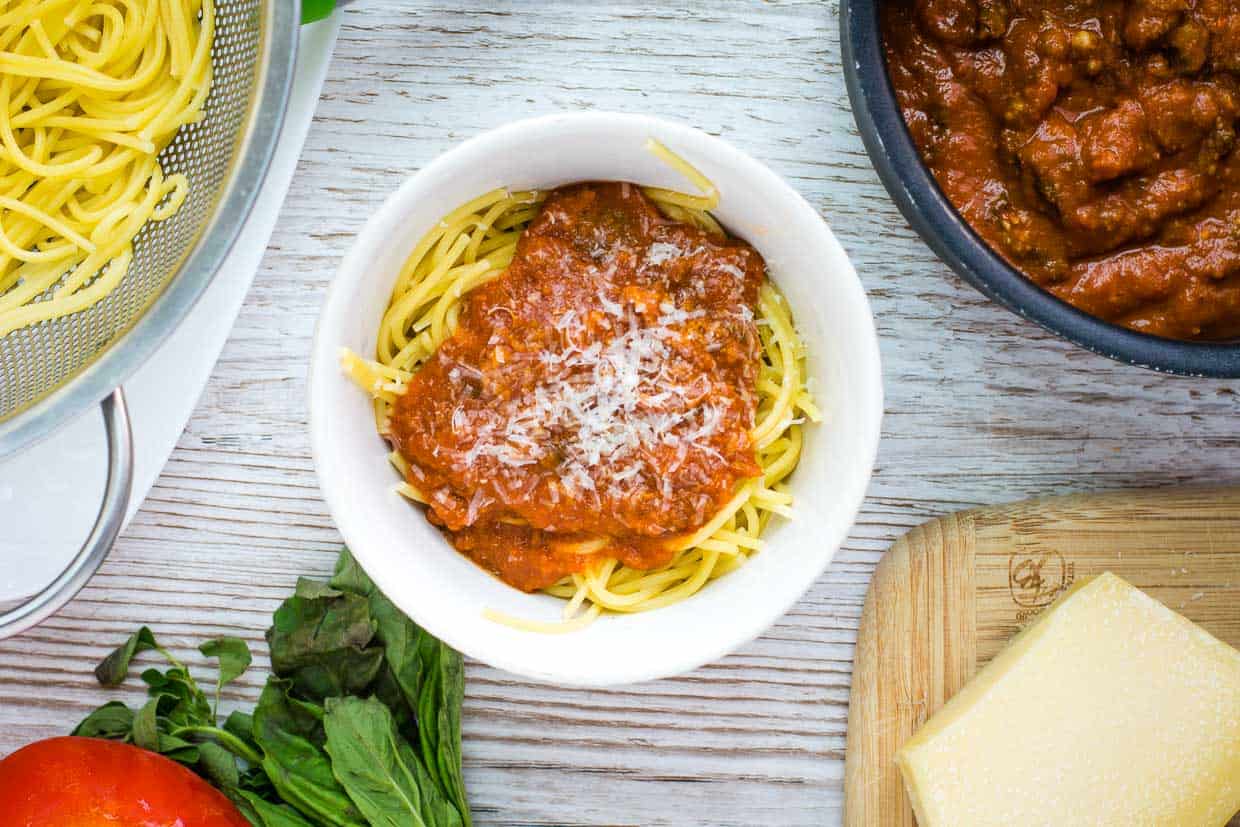An immersion blender takes all the power of a full-size blender and puts it into the palm of your hand. It’s a versatile appliance that deserves a spot in your kitchen.

An immersion blender is one of the most versatile kitchen appliances. Whether blending smoothies, pureeing soups, or making homemade whipped cream, a powerful immersion blender can handle it all. Learn what an immersion blender is, why Vitamix is the best. Plus, discover nine different ways to use your Vitamix immersion blender for all your culinary needs.
What Is an Immersion Blender?
An immersion blender, also called a hand blender or stick blender, is a kitchen tool that is basically a stick with a very sharp blade on one end and controls on the other. It can chop, whip, puree, and emulsify like a countertop blender. However, instead of transferring food into the pitcher, an immersion blender is placed into the food in whatever container you may be using.
Most good immersion blenders have a power button and variable speed settings, allowing you to adjust the speed depending on your desired results. Some immersion blenders have optional accessories like a whisk, mini food processor, or dedicated blending jars. Storage containers, like a simple wide-mouth canning jar, are great for immersion blending.
Why Choose a Vitamix Immersion Blender?
When shopping for an immersion blender, you may be spoiled for choice, as there are many options with various features and price points. If quality and power top your list of desired features, the Vitamix immersion blender should be at the top of your list. Need more convincing? Read on.
- It has a super powerful motor that is considerably quieter than a full-size blender. This immersion blender feels like it can take on anything, and it does so quickly and efficiently.
- The power buttons are buttons instead of turnable knobs, which allow you to operate the blender with one hand. While this may not seem like a big deal, the ability to turn off the blender with only your thumb is a great safety feature.
- The blade end of this blender is narrow enough to fit into a wide-mouth canning jar or mason jar, which makes it super versatile.
- Cleanup is a breeze! The bell guard that wraps the blade has no nooks or crannies that are difficult to clean. When you are ready to clean it, rinse it under running water, place the blade end into soapy water, and let it run for 30 seconds. Detach the power handle and let it air dry.
“I love using an immersion blender rather than using a regular blender for one simple reason: easy cleanup. There’s not much to wash up and it’s so easy to do!”
— Laura Sampson, Little House Big Alaska
Ways To Use an Immersion Blender
There are many ways to use your immersion blender in the kitchen. While the suggestions below are specifically for the standard blade attachment, you can do many of them with the whisk attachment. Once you start experimenting with a hand blender, you’ll realize there is no limit to what you can make with an immersion blender.

1. Pureeing Soup
Pureeing soup is the most obvious and arguably most common use for an immersion blender. The most significant benefit is that you do not have to transfer hot soup from the pot into a blender pitcher. All the pureeing happens right in the pot. Whether you want to create a chunky beef stew, a silky smooth tomato basil bisque, or something in the middle, the immersion blender puts all the power into your hand.
2. Emulsifying Salad Dressing
While you can make a simple vinaigrette by placing everything in a jar and shaking, you must properly emulsify creamy dressings to blend the ingredients and prevent the dressing from separating. A stick blender can do the job quickly and efficiently. It also makes quick work of chopping up ingredients like herbs and vegetables that can add lots of flavor to your homemade dressings.
Filled with appetizers, salads, sides, mains and desserts, Food Drink Life's cookbook will become your favorite!
- Easy and delicious recipes from a variety of top chefs and recipe developers.
- Bright, colorful pictures on every page.
- Printer-friendly recipes that you can download instantly to your device.
- Printable shopping list and a kitchen conversion sheet.
3. Emulsifying Mayonnaise or Aioli
A fantastic use for an immersion blender is making homemade toum for this chicken shawarma plate. Like mayo and aioli, the main ingredients are oil and eggs, which you must incorporate with air to create a thick creamy spread. While that sounds intimidating, an immersion blender can do all the work in a fraction of the time.
4. Whipping Up Homemade Whipped Cream
An immersion blender makes homemade whipped cream easy. Place heavy whipping cream in the bottom of a wide-mouth jar and blend it for a few seconds on the lowest setting. Add sugar or sweeteners, flavor extracts, or a tablespoon of amaretto for delicious, customized whipped cream at home. Caution: It works so efficiently that it can quickly turn your whipped cream into butter, so don’t overdo it!

5. Pureeing Sauces
A pureed tomato sauce is the basis for this homemade spaghetti sauce. Using an immersion blender to make it is much easier than using a full-size Vitamix. When making soups, transferring piping hot sauce from the pot into the blender pitcher can be a pain and dangerous. Grab your immersion blender instead to make quick work of that steaming sauce without all the mess.
6. Pureeing Smoothies and Milkshakes
Who doesn’t love a homemade smoothie or milkshake? Making them with an immersion blender means less mess and less clean-up. If your serving container is wide enough to fit the blade, you can prepare and serve your smoothies and shakes in the same container. Put in your ice cream, yogurt, fresh or frozen fruit, and liquid, then puree until smooth. It’s as simple as that.
7. Blending Pesto
Pesto and other herb-heavy sauces are an excellent way to use an immersion blender. The blender quickly breaks down soft, leafy herbs, nuts, and cheese while emulsifying the sauce perfectly. Again, all without pulling out your bulky food processor or cleaning up multiple parts.
8. Blending Batters
The thin batters we use for pancakes, waffles, popovers, and crepes, must be blended entirely to yield perfectly soft, fluffy results. You can get in your arm workout by doing it in a bowl with a whisk or using the immersion blender instead. Use the immersion blender right in your standard mixing bowl for great results.
9. Making Fruit Sauces and Jams
Homemade jam and fruit sauces are an easy way to use up fruit before it goes bad while also fancying up your next dessert. Toss your fruit into a deep pan with some sugar and a bit of liquid, then cover and simmer until the fruit breaks down. Once it’s soft, grab your immersion blender and puree it in the pan until you reach the desired consistency. For smooth sauces, puree it all the way, or for chunkier jams, puree it just a little bit. The choice is up to you.
Renee N Gardner is the creative mastermind behind Renee Nicole’s Kitchen, a recipe blog based on seasonal ingredients. It is dedicated to helping home cooks build their kitchen confidence to become home chefs. When Renee isn’t writing, developing recipes, or photographing food, you’ll find her in the garden, traveling, or enjoying the outdoors with her husband, son, and two dogs.
